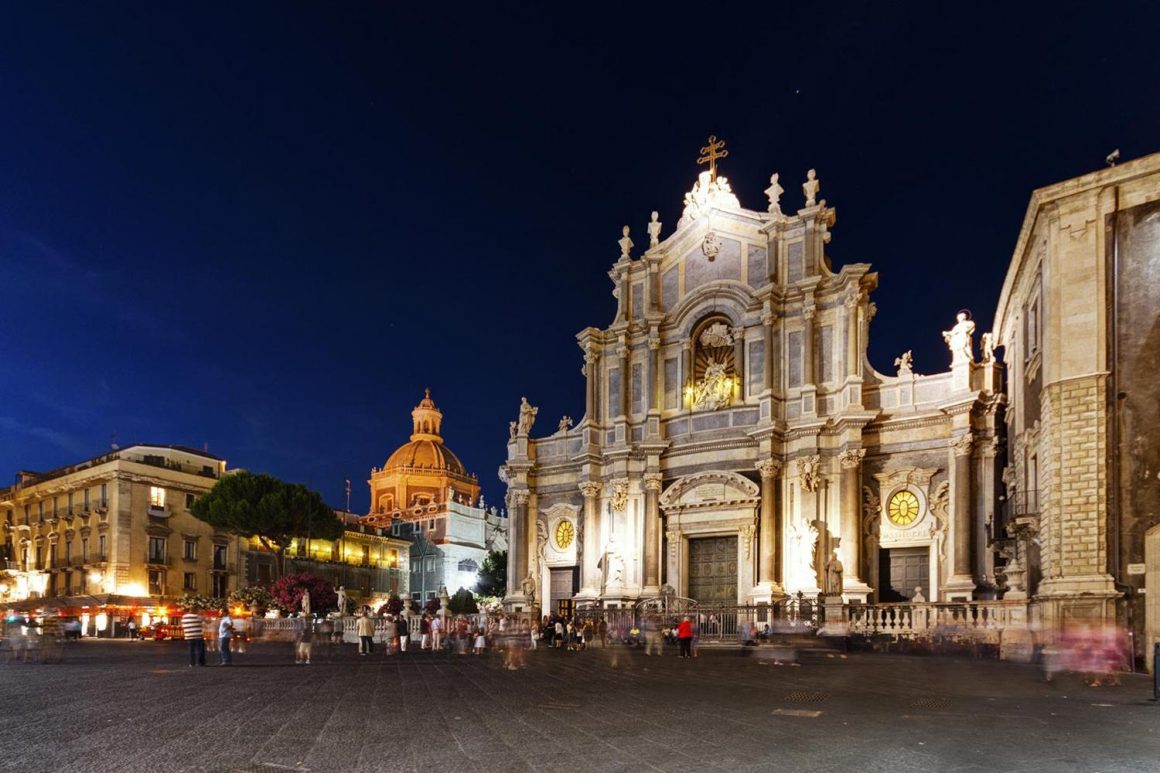Cathedral Square – Source: comunecatania.it
“Piazza Duomo” or Cathedral Square, starting point of every touristic visit, can be considered a monument itself: in fact, from this square began the reconstruction of the city after the catastrophic earthquake in 1693.
Here there were the most important sites of both of the Government and Clergy of the City: the Town Hall and the Cathedral. During the eighteenth-century the most talented architects and skilled workers from all over Sicily, have designed it and carried out a splendid Baroque style, that nowadays has become UNESCO heritage.
‘Duomo’ Square is also the place where the Catanese citizens meet during the most important moments and celebrations, like the important Saint Agatha’s ceremony –the patron saint of the city – it has become the third religious celebration in the world! At the centre of the square there’s the “Fontana dell’Elefante” a fountain with a lava elephant that is the symbol of Catania; turning your eyes clockwise from the north-side you can see the Town Hall, the and the ex “Seminario dei Chierici”, nowadays divided into two parts: the Diocesan Museum and, in the south side, “Palazzo dei Chierici” the Clergy Palace now where the Town Hall offices are joined, “Porta Uzeda” Uzeda Gate, and the “Fontana dell’Amenano” the Amenano Fountain.
But ‘Duomo’ Square conceals other surprises: in the underground, where there are “the Terme Achilliane”, and behind the Amenano Fountain, where there’s the typical fish market, the “Pescheria”, to remind us the sea is just a few steps away from there.
The Cathedral
Duomo or The Cathedral After the1693 earthquake the city Senate decided to rebuild the Cathedral where the location of the Norman Cathedral (1092) was. On the original three naves church the architect G. Palazzotto in 1709 began to create the reconstruction using the pre-existing architectural elements. The problem was to harmonize the massive load-bearing structures to the façade ant it was brilliantly resolved by G. B. Vaccarini , abbot and architect of Palermitan origin, who was one of the brightest and professional contributors to the 18th century reconstruction of Catania. He used many precious materials that came from the ancient Catanese monuments as to emphasize the idea of continuity between past and present. Inside the Cathedral against the second pillar to the right there is the tomb of Vincenzo Bellini, the great Catanese musician (1801-1835). For the citizens of Catania it is really important the chapel of Saint. Agatha which stores in the so called “cammaredda” (the little room), the relics of Saint. Agahta and the Shrine. When the Shrine is taken out the “cammaredda” on the 4th of February, it is one of the most touching moment the ceremony.

